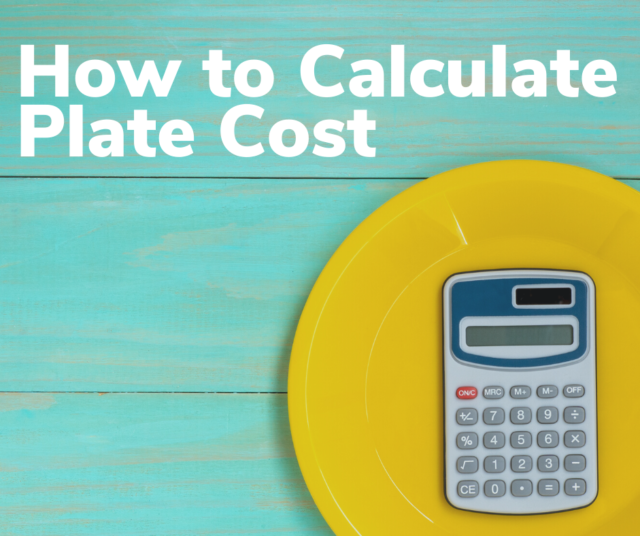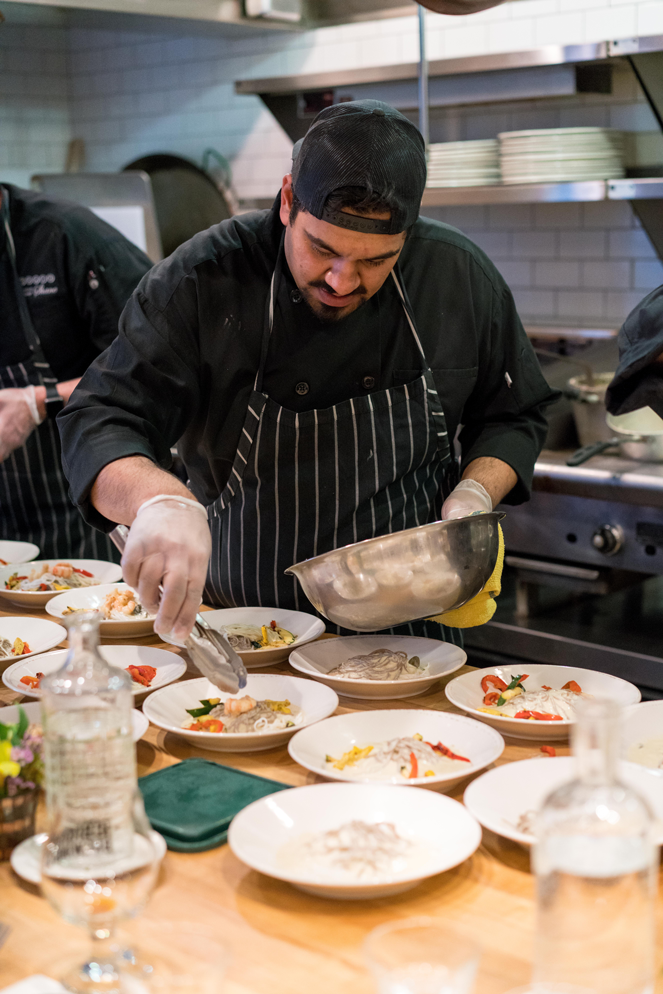How to Calculate Plate Cost for Your Restaurant’s Recipes
Make better decisions for menu pricing, budgeting, & more with precise plate costs
The reality is that many operators overlook the ongoing exercise of plate costing.
It can be a tricky and time-consuming process—especially when manually applying food cost formulas. You need to list and cost all ingredients and factor in yields, conversions, and density. You have to do this for every item on your menu as well as your prep recipes.
Many chefs and restaurateurs might perform this exercise when they initially open, but that’s it. And the truth is that conducting plate costs once is not enough. Restaurant food costing management is an ongoing process. It changes regularly as the prices of ingredients fluctuate—which is exactly why restaurants invest in recipe management software.
With food costs steadily on the rise and the ever-present vulnerability of waste, theft, and price volatility, keeping close tabs on the margins of your menu items is a critical restaurant food cost control tactic.
1. What is plate costing & why is it so important?
2. How to cost a plate of food manually?
3. …And why you should use recipe software instead?
Ready to stop getting cooked by your food costs? 🔥
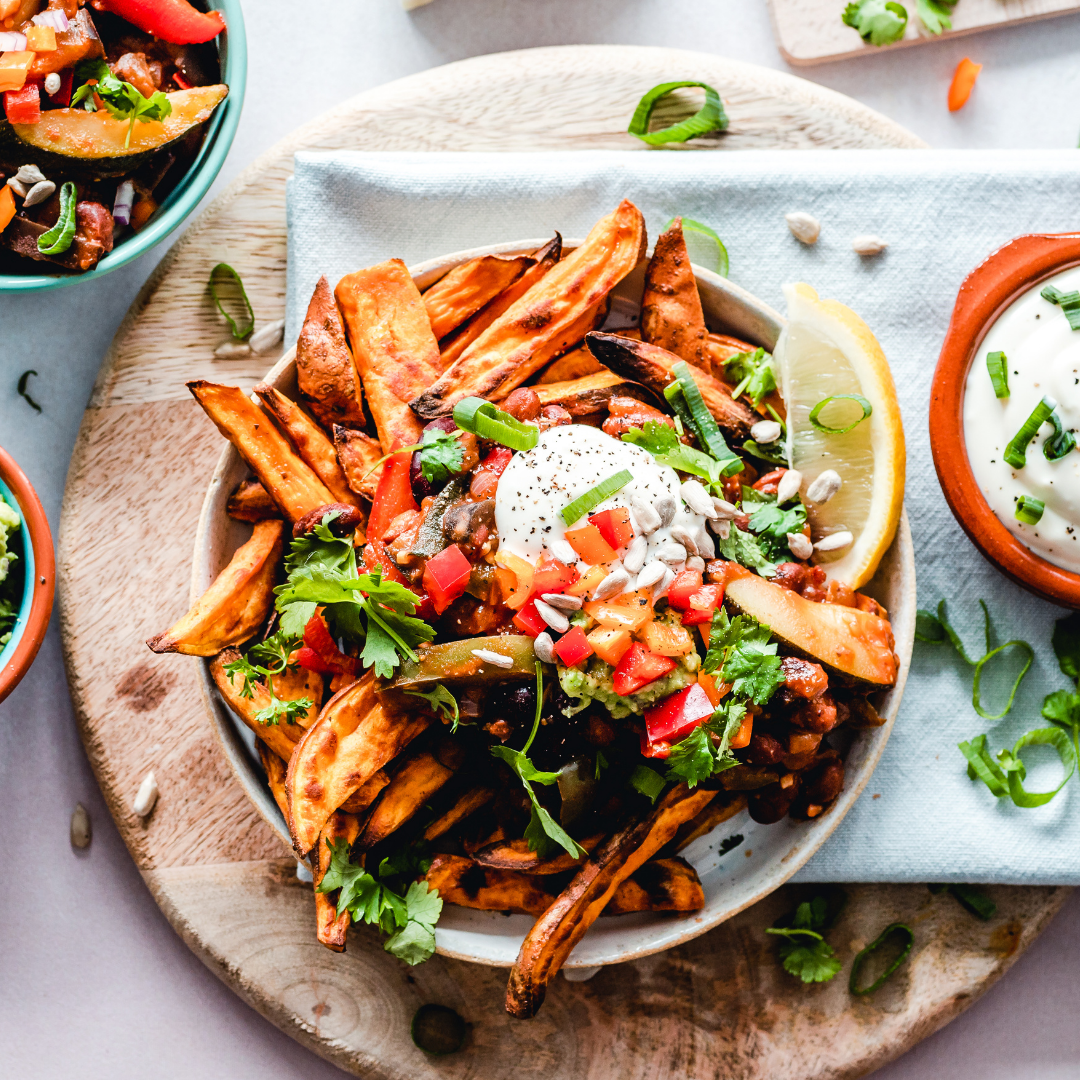
What is plate costing & why is it so important?
Plate cost, recipe cost, or portion cost represent what it costs your restaurant to serve a single menu item.
Your plate costs are a critical restaurant accounting metric helping you see how much money you’re actually making on each item.
Learning how to cost your recipes helps you with the following:
- Plate cost is an important consideration when pricing your menu. To arrive at a suitable margin—let’s say you want 20%—depends on knowing your costs. Remember, margin is simply the difference between the cost and the price. It is usually expressed as a percentage and calculated using this formula: Profit/Sales*100
- Tracking recipe costs fluctuations. This is important for navigating the seasonality of food cost, for overcoming inflation, and for hitting costing costing targets. For example, if chicken costs increase three months in a row, it’s time to raise prices or take it off your menu.
- It assists in engineering your menu for profits. Menu engineering consists of various actions you take to create a profitable menu, including pricing, design, placement, dish choice. For example, with menu engineering, you can find the right balance of low and high-margin dishes.
How to cost a plate of food manually?
Now that you know what plate cost is and why it’s important, let’s look at how to calculate it using the following 3-step process:
Step 1: Create Standardized Recipes
Step 2: Build Your Recipe Costing Template
Step 3: Complete Your Recipe Costing by:
- Listing all ingredients
- Listing the purchased unit
- Listing the purchase cost
- Including the Yield %
- Calculating the actual unit cost
- Adding the serving unit of the recipe
- Calculating the unit serving cost
- Determining portion size
- Calculating portion cost
The inspiration behind the above process comes from Roger Fields’s book, Restaurant Success by the Numbers. In the book, he explains how to cost menu ingredients for a simple and complex dish.
Step 1: Create Standardized Recipes
Don’t skip this step as recipes are your foundation for accurate recipe costing. Ensure you have recipe cards for all your dishes and store them in an accessible place for those who need it when preparing a meal.
Your recipe card will include:
- A list of ingredients
- Cooking time
- Preparation steps
- Units of measurement
- Weights
Step 2: Create a Recipe Costing Template
Next, open a spreadsheet and create a table with the following 9 key headings:

- Ingredients: A full list of ingredients used to make the dish.
- Purchased unit: This is the unit of measure that the ingredients were purchased in. This can be anything from pounds and ounces to gallons and cases.
- Unit purchase cost: The price per unit of measure as displayed on the supplier invoice.
- Yield: Yield is expressed as a percentage and is the amount left after trimming and cleaning. For example, the usable weight after you’ve trimmed and cleaned a four-pound (64-ounce) steak may be three-pound (48 ounces).
- Actual unit cost: The cost after you’ve factored in your yield.
- Serving unit: The unit of measure used in the recipe.
- Unit serving cost: The cost per serving unit, calculated using this formula: Cost per measure/units per measure
- Portion or serving size: How much of each ingredient goes into a dish you serve customers. For example, a tablespoon of butter or 5 ounces of beef.
- Portion cost: The cost of the serving size for that ingredient, calculated using the following formula: Portion size x unit serving cost.
Step 3: Complete the Recipe Costing Spreadsheet
With your table complete, it’s time to cost a dish. To illustrate how to do this, let’s look at how to calculate the recipe cost for something simple: burger and chips.
First, list all the ingredients for the dish. For example:
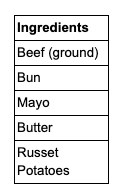
Second, list the purchased unit as per the supplier invoice. For example:
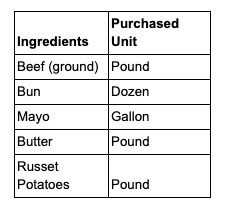
Third, list the purchase cost of those ingredients as per the invoice. For example:
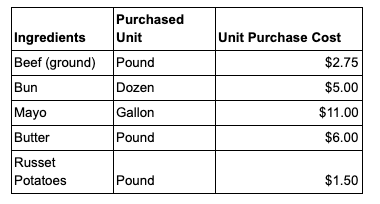
Fourth, include your yield %. Your yield % will differ depending on the type of ingredient, but a good starting point is to use this Produce Yield Chart from Chef’s Resources, which details the average yield for certain whole products. For example, the yield for the Russet potatoes is 81%.
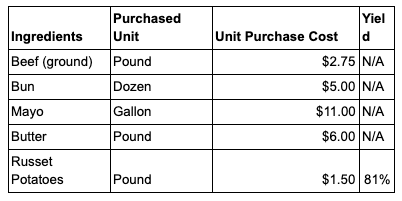
Fifth, calculate the actual unit cost for each ingredient by applying the yield %. You only need to do this calculation for those ingredients that have a yield %.
In our example, this means calculating the cost of Russet potatoes. To make this calculation, take the cost per pound and divide it by the yield %. This brings the actual cost to $1.85 ($1.50/81%).
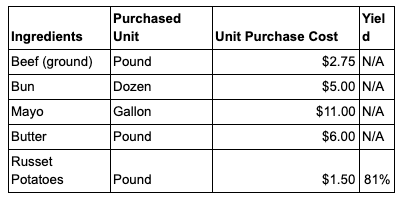
Sixth, update your table with the serving unit used in your recipe. For example:
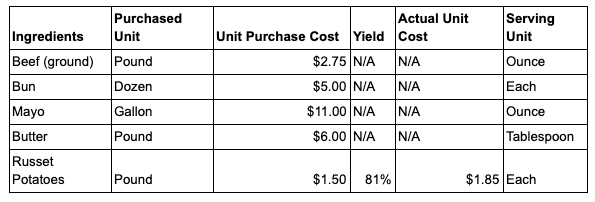
Seventh, calculate your unit serving cost. This can be tricky as it involves several unit conversions. For example, if you purchase an item by the pound but use it by the cup, you’ll have to weigh a cup to arrive at the correct unit serving cost.
Let’s look at how to calculate the unit serving cost for each ingredient, using a simple formula: Cost per measure/units per measure. Keep in mind that for items with no yield percentage, the cost per measure will be the unit purchase cost. For items with a yield percentage, it will be the actual unit cost.
- Beef: Because the serving unit is an ounce and there are 16 ounces in a pound, the serving unit cost is $0.17 ($2.75/16).
- Bun: Twelve buns are $5, so each bun is $0.42 ($5/12).
- Mayo: There are 128 ounces in a gallon, so one ounce of mayo costs $0.086 ($11/128).
- Butter: A tablespoon of butter weighs roughly 14.18 g or 0.5 ounces (half an ounce). This means there are 32 half ounces (or tablespoons) of butter in a pound. So, one tablespoon of butter costs $0.19 ($6/32).
- Russet potatoes: Let’s assume that your average potato is 4 ounces. This means that there are 4 potatoes in a pound, and your unit serving cost is $0.46 ($1.85/4). Remember, potatoes have a yield, so you’re dividing the actual unit cost by the units per measure.
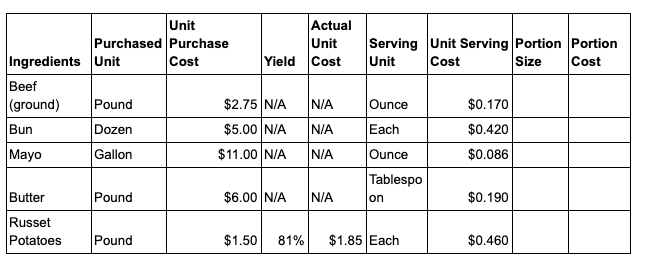
An often-overlooked measure during these calculations is density.
You’ll also need to factor in density because, for example, a pound of sugar will not be the same volume as a pound of flour.
Luckily, you don’t have to worry about this calculation if you use a density calculator. xtraCHEF provides a density calculator as part of its food cost management software.
Just let xtraCHEF know how much the ingredient weighs:
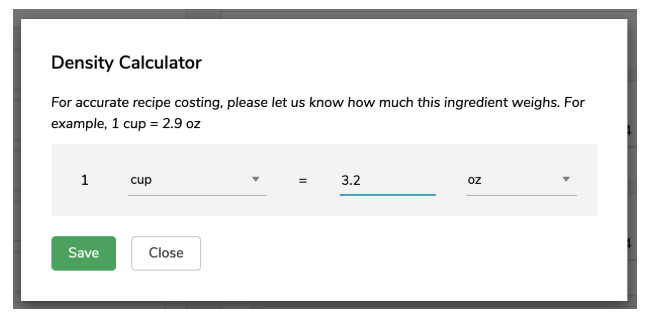
The software will then store the density as a background variable to ensure more accurate costing.
Eighth, determine the portion size or how much of each ingredient will go into the dish. Refer back to your recipe here.
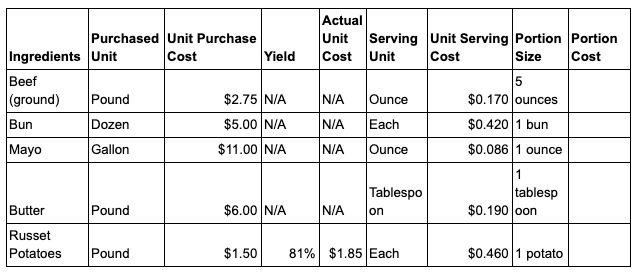
Ninth, calculate your portion cost using this formula: Portion size x unit serving cost.
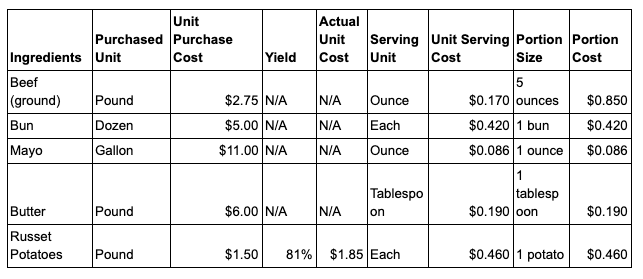
Finally, tally the portion cost of all your ingredients and include a waste percentage. There will always be some waste that occurs during cooking, which you should factor in. Unfortunately, there’s no fixed waste factor percentage you can apply.
As Roger Fields explains:
“The amount of waste will depend on the concept, preparation methods, and the skill level of your staff. In my restaurants, I would use between 10 and 15 percent depending on the menu item. Use a percentage that will allow you to price your menu competitively and still maximize profits.”
For this example, let’s assume a waste factor of 10%. This brings the total plate cost to $2.21.
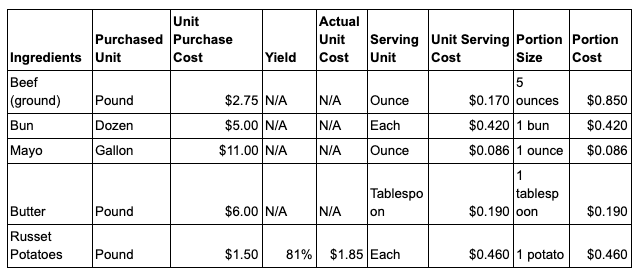
You can now calculate your food cost percentage for that plate. Simply divide the selling price into the plate cost for the food cost ratio and multiply the ratio by 100 for the food cost percentage. For example, a selling price of $6.50 gives you a food cost percentage of roughly 34% ($2.21/$6.50)*100.
Why should you use recipe management software to automate plate costing?
Calculating plate costs may be one of the most important practices for restaurant success, but it’s an incredibly difficult tasks to complete manually.
That’s exactly what xtraCHEF is here to solve for.
Our food cost management capabilities start with automated invoice processing. Invoices are the single source of truth for your product costs, and xtraCHEF captures this truth with a simple photo or invoice scan.
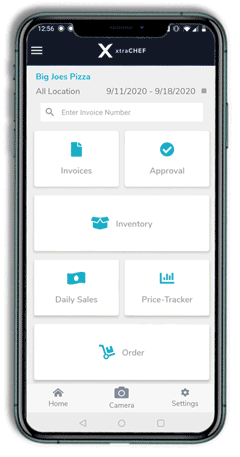
Our platform pulls line-item level details (product name, unit of measure, quantity, cost) from your invoices. That information then funnels to your product catalog, updating costs for your ingredients and the recipes they’re included in.
All you have to do is define your product catalog, assigning different groups to the appropriate general ledger codes.
Once you do that, you can create your recipes and build out your product inventory in xtraCHEF. Then you start scanning, and let the invoices rise into powerful restaurant insights and reporting dashboards for plate costing and more.
![]()
If you’re ready to put time back in your day and automate your plate costing, then schedule a time to speak with a product specialist and see xtraCHEF by Toast in action.
Nick Darlington is a B2B writer who conceives, writes and produces engaging blog posts and lead magnets for technology companies. When he’s not writing for clients, he’s blogging at WriteWorldwide. See how he can help your business by visiting his site and scheduling a no-string attached call.
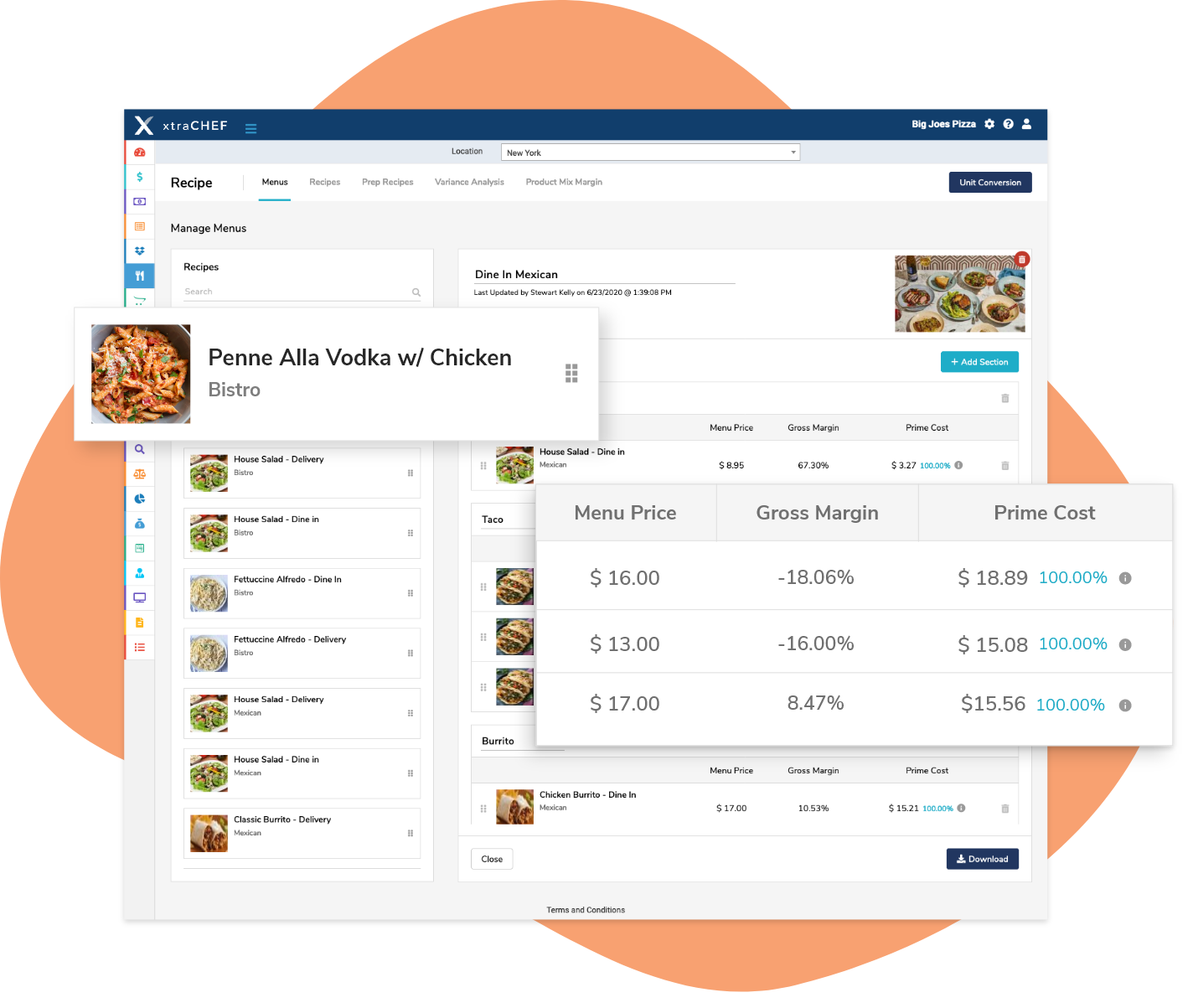
Let xtraCHEF do your dirty work.
See how our platform sets restaurants of all sizes and service levels up for success by scheduling a demo with a Product Specialist.
